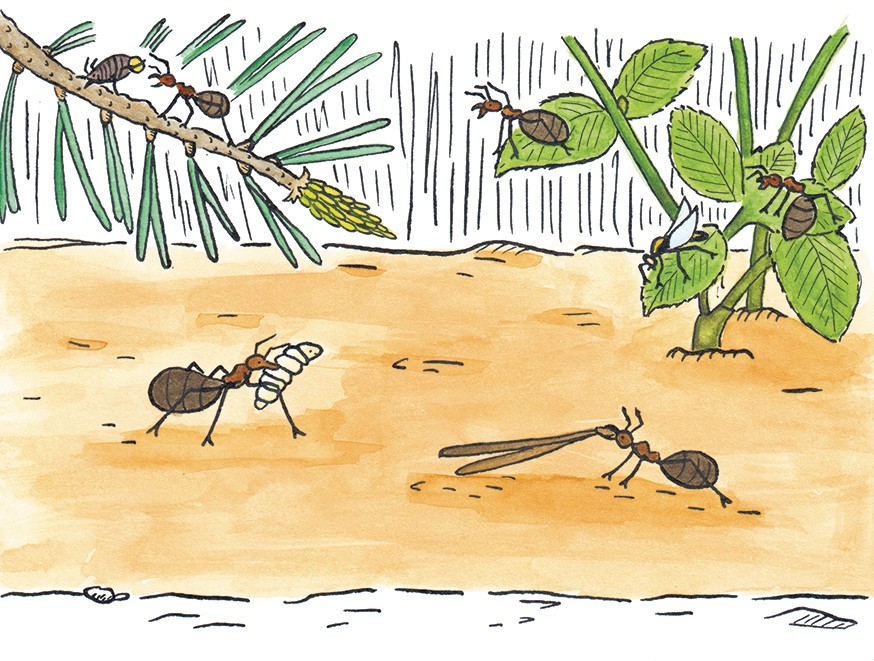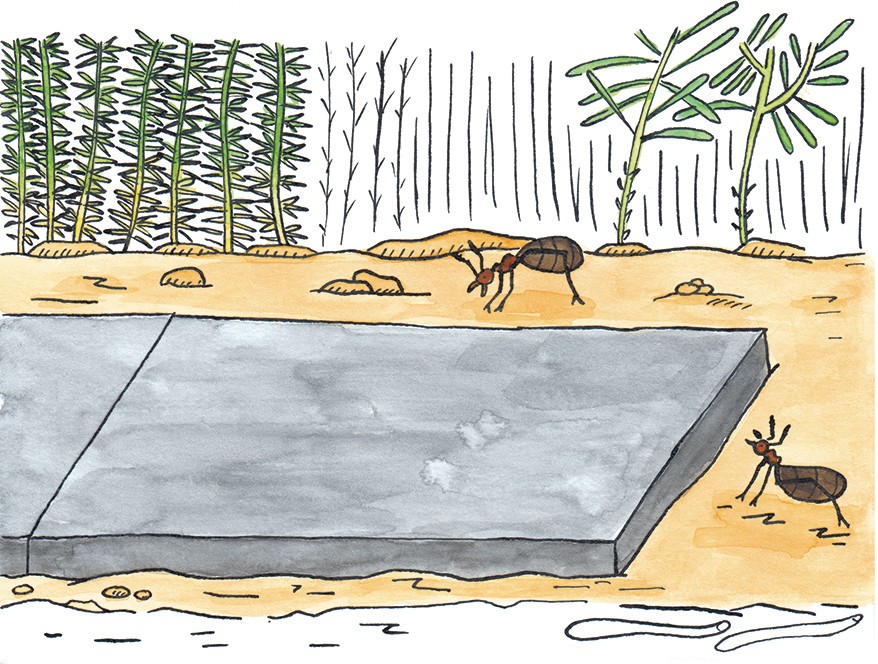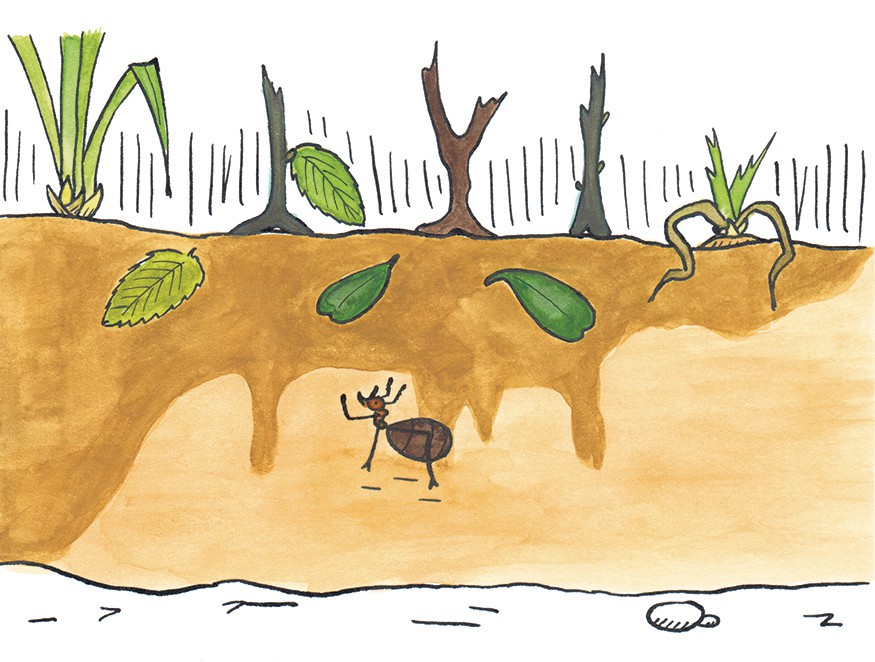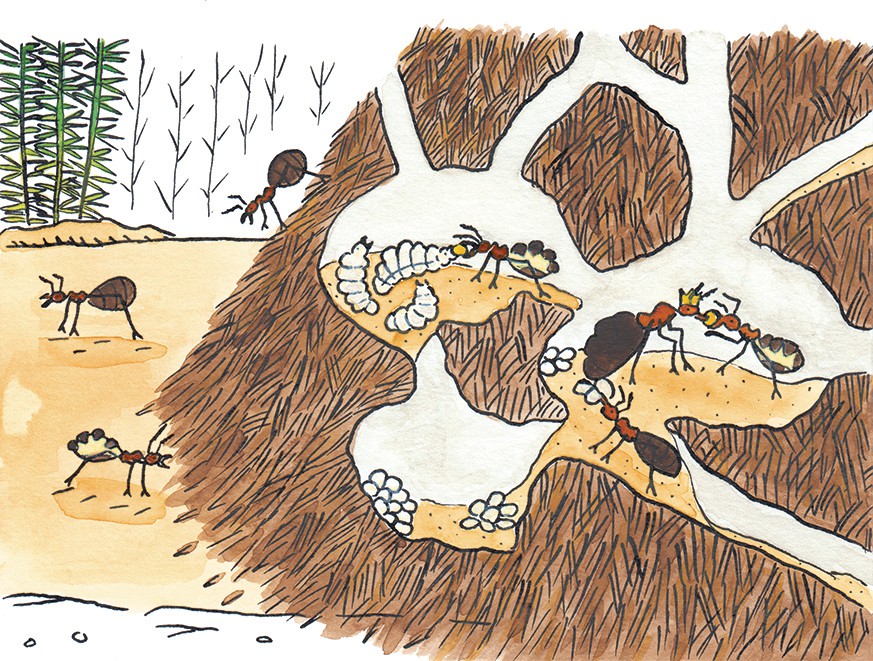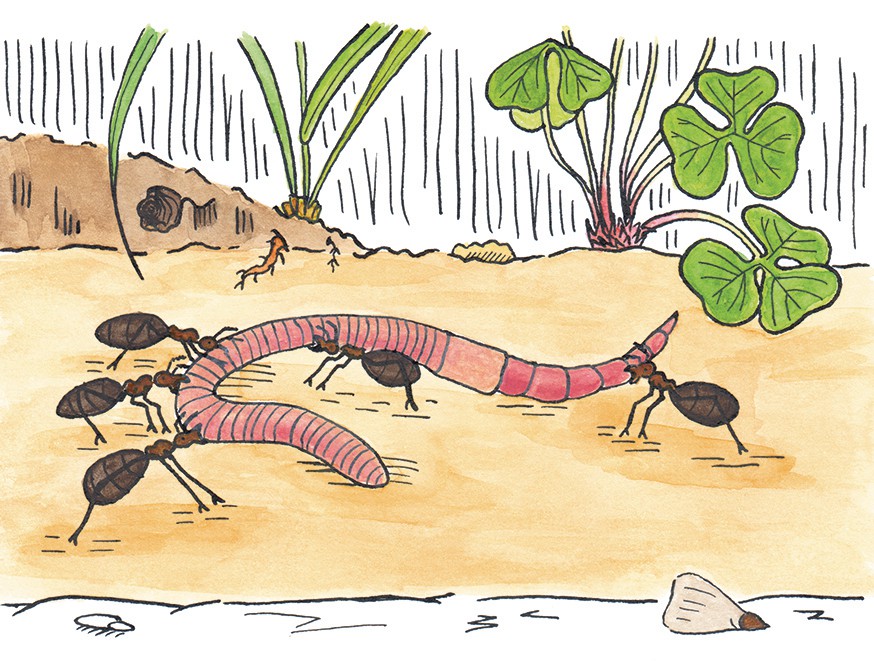Hello everyone,
I have been invited by TKI to tell you about the lives and collective work of ants. But before we dive deep into their social interactions and the communal organization of the ant colony, I would like to briefly introduce myself:
My name is Angelika Wischermann, and over the past two years, as part of an art project, I have been intensively studying the transport systems of our local wood ants (you probably all know their nests made of fir needles – these are built by the mound-building wood ants). During this time, I had the opportunity to observe their food-gathering paths, the organization of their transport routes, and the impressive coordination within the ant colony. This insight revealed to me just how incredibly complex ant societies live and work.
Ants owe their success to their social collaboration. But what does “successful” really mean in this context? It means that ants – much like us humans – have managed to inhabit nearly every part of the Earth: from deserts to tropical rainforests, from high mountain regions to deep, damp swamps – ants can live almost anywhere. They are generalists and highly adaptable. A crucial part of this adaptability is their collective shaping of their environment and their unwavering commitment to the common good.
However, not everything is sunshine and roses in the world of ants. Let’s talk about the problems facing our local wood ants: climate change and economically driven, short-term human interventions can destroy their habitats for a very, very long time. Loss of biodiversity due to monocultures and toxic contamination of habitats destroys the vibrant diversity of ecosystems. A wide range of plants and living beings is essential to create a stable and life-friendly environment.
And complete clear-cutting inevitably leads to the extinction or displacement of these socially engaged ant collectives! If ants are deprived of all their basic living conditions, it becomes impossible for them to continue living and working in that place – they have to leave.
Let us stand together to ensure that diverse habitats and social diversity are preserved! So that these wonderful, common-good-oriented collectives can continue to live and survive among us.
Let’s now take a deep dive into the characteristics and strengths of ant collectives: As I gradually tried to immerse myself in the community of wood ants to understand their transport systems, I was initially met with a big surprise: ant communities are not nearly as hyper-efficient and structured as we often imagine. Ants are not all of one mind, and they do not work in collective harmony toward one single, smooth-running, perfect state (although in cases of attack or crisis, they can indeed act incredibly quickly and collectively to resolve the emergency, and the basic food supply or nest maintenance runs continuously and smoothly –they seem to intuitively know what needs to be done).
Rather, there exists a diversity of opinions, ideas, and visions about which path the community should follow. There is no hierarchy; ants make their decisions collectively and in a grassroots-democratic way.
I would like to illustrate this with an example: The ant colony has grown too large and populous, and the founding of a new colony is imminent. (For clarity: mound-building wood ant colonies are often inhabited by multiple queens who produce offspring. In these cases, due to strong population growth, the division of the colony may become necessary to maintain the supply of vital resources).
In such a case, scouts set out to find a suitable location for a new colony. If a scout believes she has found a good spot, she will propose this site to some of her companions. To do this, she returns to the nest and nudges a fellow ant in a specific way. The fellow ant then curls up, and the scout carries her to the proposed nest site.
Once there, the carried ant makes up her own mind: if she does not like the place, she simply returns to her work. But if she does like it, she returns to the nest and begins carrying other companions to visit the site. In this way, various potential sites are proposed, and eventually, the most popular site is chosen for founding the new colony.
It is precisely this diversity of opinions and proposals that makes ants so successful and resilient. It is only through the wide range of equally valued suggestions that different approaches to diverse challenges emerge. It is a matter of listening and being heard (in a chemical-tactile way) that makes the ant community so strong and enduring.
Moreover, the outside areas and public traffic ways play a central role in the ant community. For wood ants, the road is far more than a mere transport path. It is a complex network and a vital meeting point for the community. This meeting place – established through constant use and scent-marking – is essential for the life and survival of the entire colony. Beyond connecting the nest with critical resources like food, water, and building materials, these roads enable interaction between different colonies, fostering genetic diversity and strengthening social bonds.
The importance of meeting places and networks is evident not only in the fascinating world of ants but also within our own social structures. Just as ants use their roads for exchange and collaboration, we humans also need public spaces and platforms to strengthen connections and promote diversity. These shared spaces are essential for facing challenges together and creating a vibrant, inclusive society.
The TKI, as a community of interest, is committed to promoting precisely such cultural spaces for connection. That is why I sincerely hope TKI will continue to stand up for a liveable, diverse environment with a strong social climate. Thank you for the networking, the exchange, and the education you’ve provided for all of us over the past 35 years. That has been, and continues to be, truly remarkable.
CONGRATULATIONS ON YOUR 35TH ANNIVERSARY!
In these difficult times, we are facing a multitude of major challenges. That is exactly why we need meeting places of unity and exchange more than ever. So let us hope that together we can all make our voices heard – so that we can preserve and create a diverse habitat and an inclusive society right here in our local area.
Thank you for your attention, and I wish you all a pleasant evening.
